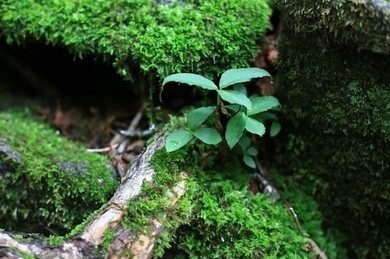Pinellia Plant Tissue Culture
There are 11 species of Pinellia plants worldwide, mainly in eastern Asia. The most common and widely used one is Pinellia ternate (Thunb.) Brei.
 A Pinellia plant growing in the wild
A Pinellia plant growing in the wild
We used tissue culture technology to establish a fast-breeding
system for Pinellia plants, which can not only propagate a large
number of detoxified seedlings in a short period but also has
important significance for its germplasm improvement.
Pinellia plant has a long history of medicinal use and mainly contains alkaloids, sitosterol, polysaccharides, amino acids, volatile oils, trace elements, and nucleosides, among which nucleosides are one of the main substances of its physiological activity and have a variety of biological activities such as antitumor, antiviral and gene therapy.
With the increase of the medicinal use of the Pinellia plant, the wild resources of the Pinellia plant have been heavily exploited and exploited, while the misuse of field pesticides has led to the further scarcity of the wild resources of the Pinellia plant. To meet the demand for medicine, Pinellia plants are artificially grown at high density for a long time, which makes the accumulation of viruses such as DsMV and CMV in the plants, which will seriously lead to yield reduction of Pinellia plants by up to 60%, and once infected will carry the virus for life, which seriously endangers the germplasm and quality of Pinellia plants.
Tissue culture service
Lifeasible uses tissue culture technology to establish Pinellia plant fast propagation system, using tubers, bead buds, leaves, bead buds, and petioles as explants, which are de-sterilized and sterilized onto specific media to induce regenerated plants. Our technical service is an effective solution for Pinellia plant quality degradation, disease control, etc. We have formed a complete set of technical protocols to produce Pinellia plants on a large scale to meet your research needs.
- Pinellia ternate (Thunb.) Brei
- Pinellia integrifolia N. E. Brown
- Pinellia pedatisecta Schott
-
Pinellia cordata N. E. Brown
Regeneration pathway
Pinellia plant explants are directly induced to appear as adventitious shoots or protoplasts. This way is fast, takes less time, and is genetically stable. And we often select petioles, leaves, as explants to more easily induce the formation of protoplast-like bulbs.
First Pinellia plant vegetation is induced by hormones to first dedifferentiate to produce guaiac tissue and then differentiate based on the guaiac tissue to produce adventitious shoots. The advantage of this induction method is that the differentiation ability of healing tissue cells is high and each piece of healing tissue can differentiate into shoots and roots and develop into a complete plant on a suitable medium.
- One-step seedling formation
Pinellia plant explants are first formed on the medium, and then the roots and adventitious shoots are differentiated directly on the original medium, which can grow into robust seedlings within a certain period. The one-step seedling method has a short regeneration period, high regeneration frequency, simple experimental operation and culture procedures, can maintain the original characteristics of the plant itself, and is conducive to large-scale factory production.
You want to sign a confidentiality agreement.
You have a specific plant species for your experimental needs.
You have a reliable and relevant cooperation project to discuss.
You are very interested in our project or have any questions.
You need an updated and detailed quotation.
For research or industrial use.

 A Pinellia plant growing in the wild
A Pinellia plant growing in the wild
